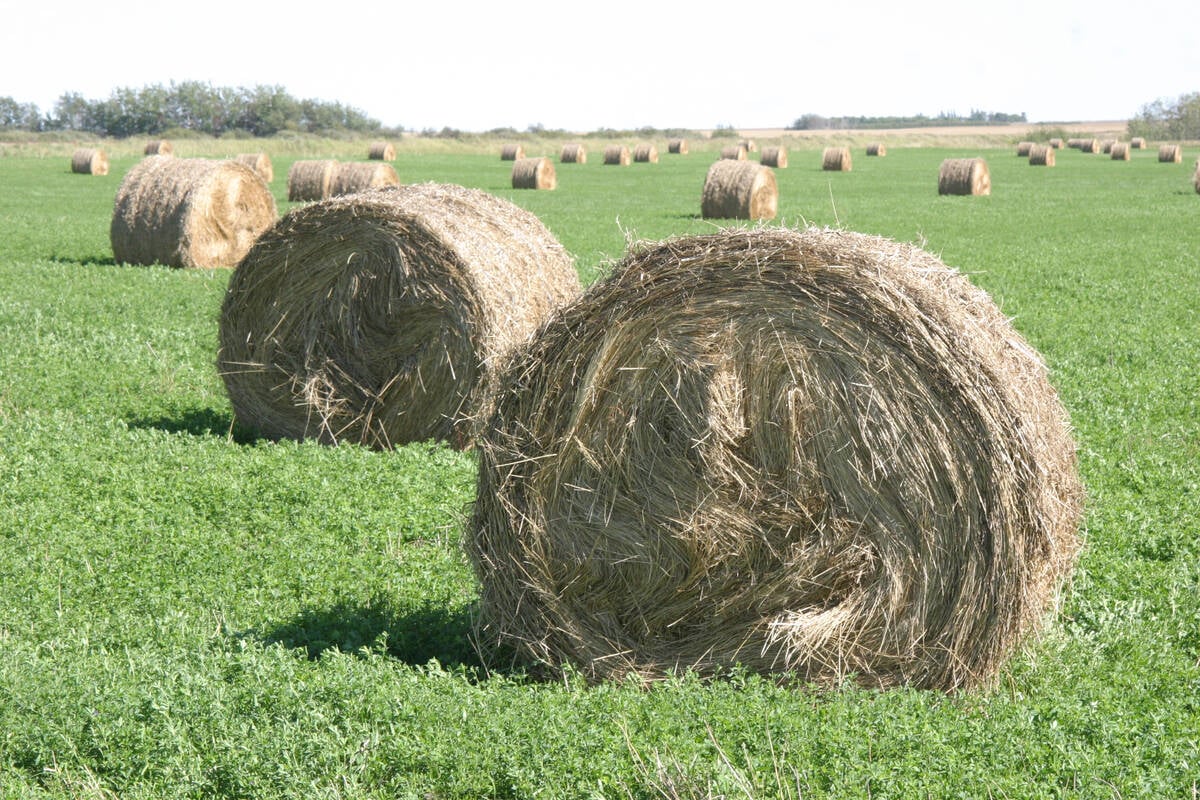Researchers want to know if a North African barley variety’s heavily waxy stems give it greater staying power in the swath for late season grazing.
Brought to Canada about 100 years ago, the experimental forage line dubbed EX733, which was originally used to feed goats in Morocco, could offer producers advantages of millet’s waxy stems while keeping the higher yields of barley.
“It acts like millet. It will keep in the swath at a much better rate than conventional barley,” said Mario Therrien, a barley breeder at Agriculture Canada’s research centre in Brandon.
Read Also

Breaking down successful winter feeding into six steps
It’s that time of year when it is important to start planning for a cow herd’s winter feeding program. Here are six steps I think are necessary to consider when getting your feed tested.
“So far, EX733 is indeed seeming to keep better in the swath. We’ll see if that translates into equivalent animal preference and performance, or something different.”
Along with the heavy wax variety, two other six-row, smooth-awned and high yielding varieties – AC Ranger and Desperado – were seeded in long strips, along with AC Ultima, a spring triticale.
In each paddock, four old, dry cows – notorious for being picky eaters – are grazing the four crop varieties for about one month, finishing in late October.
Hushton Block, a pasture systems researcher at the research centre, said samples collected during the grazing period would be used to determine the yield, nutrient content and relative amount of the feed that each cow eats.
“Our issue of forage quality is that first they have to eat it, and then it has to be digestible. If they don’t eat it, it doesn’t matter how much yield you have.”
Last fall, the deer that plague the research farm clearly preferred the heavy wax variety, he said.
“We observed that the local deer herd was coming in and eating all the heads off the waxy barley. They had a very strong preference, because they were not touching the regular barley at all,” he said.
“We said, ‘we should see if we can do this with cows.’ “
Preliminary results found that although the triticale, with 3,800 kilograms per acre in initial yield and 800 kg in post-swathing regrowth, gave by far the highest biomass yield, it was also the least preferred by the cows.
EX733 came in second, with 2,800 kg per acre initial yield and 1,200 kg in regrowth.
Some of the material left over from the trials will be placed in a nylon bag and placed in the rumens of steers to see how much of it is digestible.
“From that, we’ll be able to identify which one they prefer to eat, how digestible it is, and therefore we’ll be able to identify the better quality barley,” Block said.














